CSI: Forensics in Fife
This is a long post. If you can’t be bothered to read it in its entirety the conclusion is …
It’s the viruses wot done it … probably.
But the take home message is that you can learn from colonies lost in midwinter.
Introduction
I always have mixed feelings about midwinter hive losses, or deadouts as they’re called in the US. Of course, I regret losing the colony and wonder whether I could have managed them differently, or prepared them better, to increase their chances of survival. At the same time I’d much prefer a weak colony perishes in midwinter rather than having to mollycoddle them through the spring.
Winter colony losses in the UK vary from year to year but have averaged about 20% over the last decade (BBKA figures and SBA data). Whether these accurately reflect real losses is unclear to me – there are no statistics and they are usually by self-selected beekeeper reporting, so possibly unreliable†.
Mollycoddling weak colonies in the Spring … a wasted effort?
The reality is that weak colonies in the spring require a lot of support and still may not survive. Even if they do, there’s little chance they will be strong enough to exploit anything other than the late season nectar flows.
If the colony is weak because of queen problems then they are likely to need re-queening. This requires a spare queen early in the season – not impossible, but it needs planning or is likely to be expensive. In my view you’d be better off using the ‘spare’ queen to make up a nuc from a prolific colony, rather than trying to rescue what might be a basket case.
If the colony is weak because of disease then having them limp on through the spring is a potential disaster for your other colonies. If it doesn’t recover quickly it’s likely that neighbouring colonies will rob it out, both destroying the weak colony and transferring whatever it was ailing from around the apiary.
Finally, the colony might be weak due to poor management e.g. insufficient stores in the early spring when the queen was gearing up to lay again. In this case you might be able to rescue the situation by boosting it with syrup, brood and bees. However, care is needed not to weaken your other colonies. Two half-strength colonies are more work and much less use – they will collect less honey – than one full strong colony.
Learning from your losses
So, rather than pampering weak colonies in Spring – particularly if they’re struggling because of disease or queen problems – I’d prefer they expired in the winter. That sounds cruel but isn’t meant to. The reality is that a proportion of all colonies are likely to be lost in the winter … on average ~20%, but significantly more in long hard winters (or perhaps with more accurate surveys!). As beekeepers, all we can do is manage them in ways to minimise these losses – keep strong, healthy colonies and provide them with sufficient stores – and learn from those that are lost.
How do you learn from the losses? By examining the ‘deadout’ and trying to work out what went wrong. You then use this information in subsequent seasons to try and avoid a repeat performance.
For example …
A life in the year of a June swarm
Sometime in early/mid January a colony of mine died.
The colony was alive in early December when treated for mites. It was suspiciously quite at the end of that month when other colonies were flying. It looked moribund by mid-January on a quick visit to the apiary.
I took the hive apart on the 30th of January to see what might have gone wrong.
But before the autopsy, here’s the history of the deceased …
- 7th June – a small to medium sized swarm arrives in a bait hive. The bait hive had foundationless frames so it was difficult to estimate the amount of bees in terms of ‘frames covered’. My notes state ” … 4-5 frames of bees (ish) …”.
- 8th June – very brief inspection, two frames nearly drawn. Queen not seen.
- 9th June – vaporised with an oxalic acid-containing treatment. 21 mites dropped in the first 24 hours. Not monitored after that as I replaced the solid floor of the bait hive with an open mesh floor.
- 19th June – unmarked queen laying well. My notes state “… suspect this is a 2015 Q on account of the lousy weather we’ve had …”. There was already sealed brood present.
- 27th June – clipped and marked the queen blue. At this point there were over 7 frames of brood in all stages – eggs, larvae and sealed brood – present.
- Between then and mid-August the colony continued to build up very well … so well I ‘harvested’ three frames of brood and bees to make up nucs for circle splits.
- In mid/late August I treated three times at five day intervals with a vaporised oxalic acid-containing miticide. My notes in August state ” … KEEP AN EYE ON THIS ONE … very high mite levels …” and (after a second round of treatment) in late September, ” … mite levels still high …”. Actual mite counts weren’t recorded.
- In late September/early October the colony was fed with fondant. An additional block of fondant was left on into the late autumn.
- Further miticide treatment was added in early December. Mite drop was high but not outrageous – about 44/day averaged over the first 5 days, dropping to 3/day over the subsequent five day period.
- By late December the mite drop was less than one per day … however, by this time I was beginning to be concerned as there was very little activity from the colony on the warm days around Christmas.
The autopsy
I took the roof off the hive and removed the remaining fondant. Some of the fondant had dripped down between the frames but, in taking these apart, it was clear there were sufficient stores present.
- Expired colony …
- Stores and fondant …
- Starved bees …
The frames were clean. There were no sign of Nosema, which usually appears as distinctive faecal smearing and marking on the top bars, the face of the frames and – in a heavily infected colony – the front of the hive.
The frames were almost devoid of bees. There were a hundred of so clinging to the middle pair of frames. I brushed these away to reveal a dozen or so corpses stuck headfirst down in the cells. This is characteristic of starvation. These particular bees likely died of starvation, but the majority did not (or they would have also been wedged headfirst into the comb).
- Corpses …
- The marked queen …
- Sealed colony …
Having removed the frames the few hundred dead bees lying on the open mesh floor could be seen. Amongst these was the blue marked and clipped queen. The bees on the floor weren’t showing any obvious signs of disease – no characteristic shrivelled wings seen with overt deformed wing virus infection for example.
I’d walked to the apiary so couldn’t take the hive away with me. I therefore sealed up the entrance to prevent any robbing just in case there was disease present that could be transmitted to another colony. In due course I’ll burn old frames, I’ll treat some of the good drawn comb with acetic acid fumes and I’ll clean and sterilise the hive.
Elementary, my dear Watson‡
There’s no really obvious smoking gun, but there are some reasonably strong clues. I’m pretty sure why and how this colony succumbed.
But first, what didn’t kill off the colony? Well, Nosema didn’t and nor did starvation. Sure, a handful of bees in the middle frame died of starvation, but the majority were on the floor and there were ample stores in the hive and some fondant remaining. It had also been warm enough to move about within the colony to get to these stores.
It’s not possible to deduce much about the queen. The colony was strong in late August but not fully inspected after that. My notes state that brood levels were low in late September, but they were in all the colonies I peaked in at that time. She could have failed catastrophically soon afterwards. If she had I might have expected to find signs of attempted replacement e.g. a queen cell, as there were a few warm periods in the autumn. The fact that she was still present is far from conclusive, but suggests to me that she didn’t fail outright. The colony wasn’t full of drones late in the season suggesting she was poorly mated, though there are plenty of other ways the queen can fail. At least until late August she was laying very well.
I think the two main clues are the Varroa levels in autumn and December, coupled with the small number of bees present on the floor of the colony. Taking those in reverse order. There were far fewer bees than I would have expected from a colony that entered the autumn with about 8 frames of brood. This suggests to me that the bees were dying off at a faster rate than expected. Many bees that died off earlier in the winter would have been carried out and discarded on the warmer days.
The Varroa levels were very high in autumn and quite high (at least for my colonies) in December. In the autumn I didn’t record the numbers. A couple of hundred dropped after treatment in December isn’t huge … but I suspect that the colony was much reduced in size by now meaning the percentage infestation was likely significant.
The damage was already done …
Miss Scarlett in the ballroom with the lead piping
I think this colony died due to the viruses transmitted by Varroa, in particular deformed wing virus (DWV). DWV is known to shorten the life of overwintering honey bees – see this study by Dainat et al., for full details.
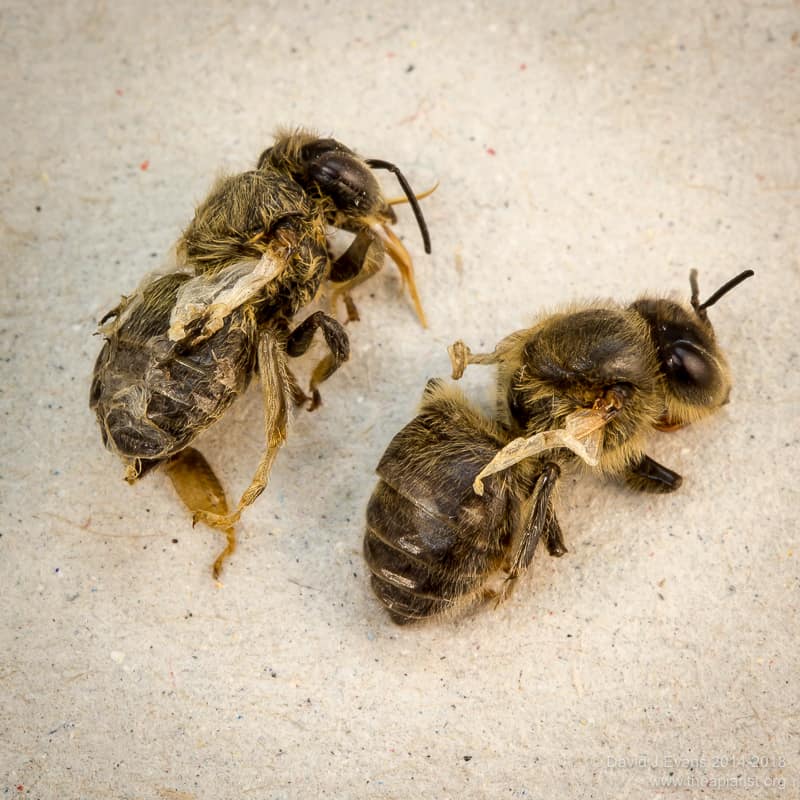
DWV symptoms
Why are there no symptomatic bees visible in the carpet of bees littering the floor of the hive? That’s easy … you only get these symptoms in very young bees that have emerged from Varroa-infested brood. In the winter there’s little or no brood (and there certainly wasn’t for some time in this colony). Any bees in this colony that had emerged with DWV symptoms would have been discarded from the colony months earlier. The colony was inspected every 7-10 days from mid-June to late July but there were no obvious signs of DWV symptomatic bees. They might have been missed, but I’m reasonably experienced at spotting them.
My interpretation is that the colony arrived with high Varroa levels and that – despite treatment shortly after arrival – these persisted through to mid-August. The mites transmitted the usual cocktail of pathogenic DWV strains within the colony. High Varroa levels are known to result in the massive amplification of virulent DWV strains in exposed bees. This late summer/early autumn period is a critical time for a colony. It’s when the overwintering bees are being reared. I discuss this at length in “When to treat?“. These overwintering bees, now infected with virulent strains of DWV, subsequently died off at a higher rate than normal. Despite the colony appearing reasonably strong in late August, many of the bees were carrying a lethal viral payload.
Bees that died in late autumn would have been carried out of the hive and discarded in the usual manner. Overall bee numbers continued to dwindle, leaving just a few hundred and the queen by the year end. We’ve had some hard frosts in the last month. The expired colony is in the same apiary as the bee shed which has a max/min thermometer inside. The lowest temperature seen was -6°C during this period. This probably finished them off.
So no crime scene … just another reminder that the viruses will get you if the Varroa levels are allowed to get too high.
Learning from my mistakes
I think I made one big mistake with this colony … way back on the 10th of June, just three days after it moved into the bait hive. I treated for mites, monitored mite drop after 24 hours and then left the colony with an open mesh floor. I should have monitored for longer (mite drop after vaporisation is often greater after the first 24 hours). I would have then realised how badly infested they were and could have taken greater care to reduce mite levels. By mid/late August mite levels were probably catastrophically high. They were hammered down with miticides but the damage was already done. I suspect that this is also a good example of why the timing of treatment is critical.
It’s sobering that an apparently minor oversight in midsummer probably resulted in the loss of the colony in midwinter.
If you got this far, well done. It wasn’t my intention to write so much. Swarms are a significant source of potential disease and carry a disproportionately high mite load … something I’ll discuss in the future.
† They are not unreliable because they are reported by beekeepers 😉 Not entirely anyway. They are unreliable because they are generally a self-selecting group that report them. The BBKA or SBA ask for beekeepers to complete a survey. Some do, many do not. The BBKA do not report – at least in their press releases – the number of respondents. Self-selecting bias in surveys means they may not be entirely (or at all) accurate. The SBA surveys by Magnus Peterson and Alison Gray are more thorough. For their 2014 report for example the sample size was 350, with a total of 213 respondents (for comparison, there are about 4000 beekeepers in Scotland). With this information, coupled with some additional data – for example, knowing that only 87% of respondents were actually keeping bees during the survey period! – you can determine how representative the survey is.
‡ Sherlock Holmes never uses this phrase in any of the books by Conan Doyle though he does use a number of similar expressions. The phrase “Elementary, my dear Watson” was first used by PG Wodehouse in Psmith, Journalist which was published contemperaneously (1909). The actor Clive Brook used the phrase in the 1929 film The return of Sherlock Holmes.
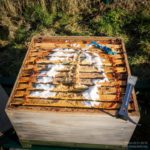
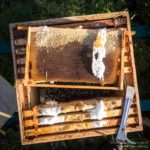
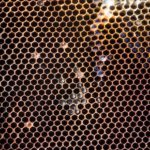
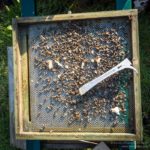
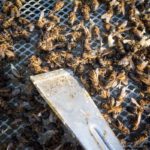
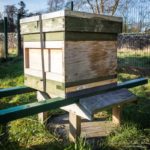
Join the discussion ...